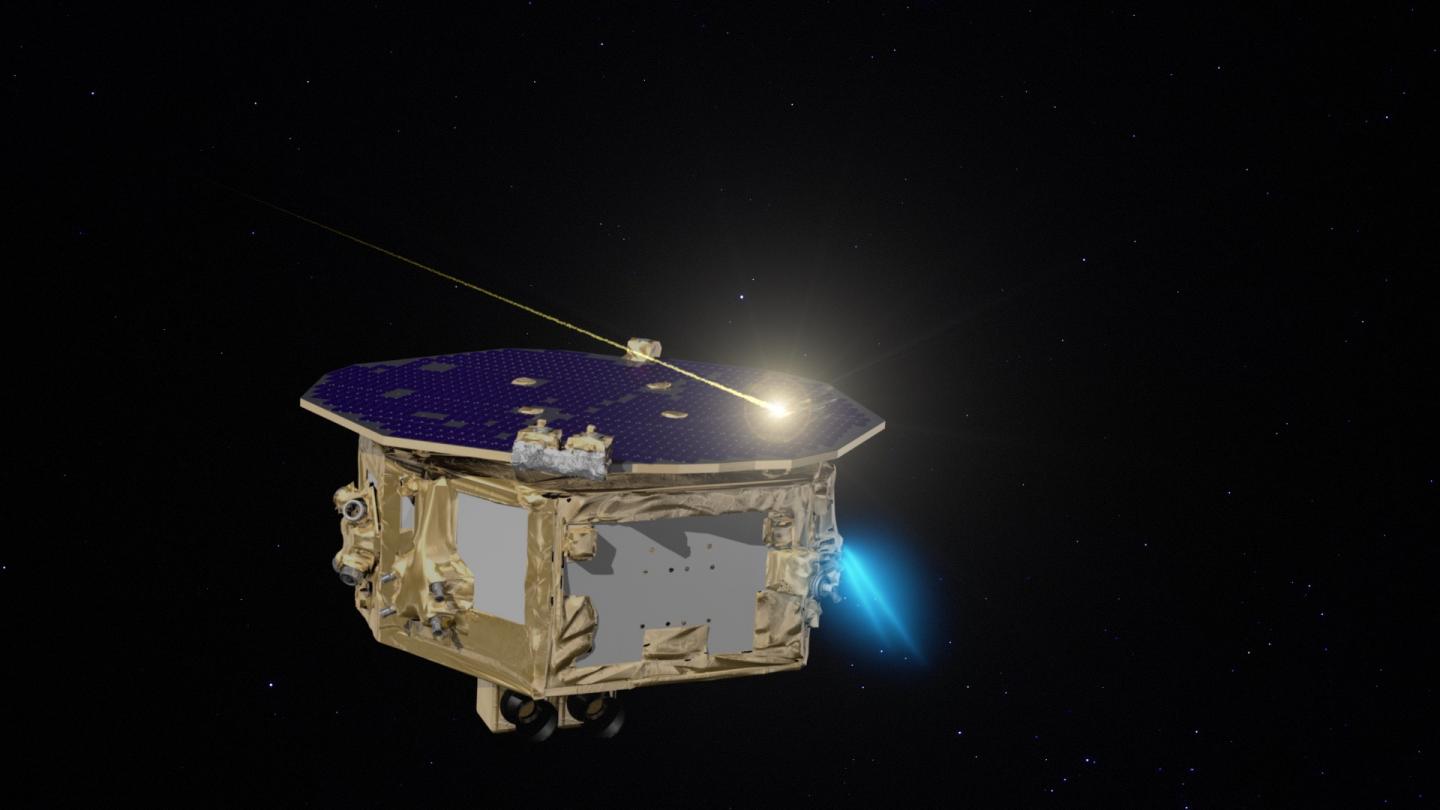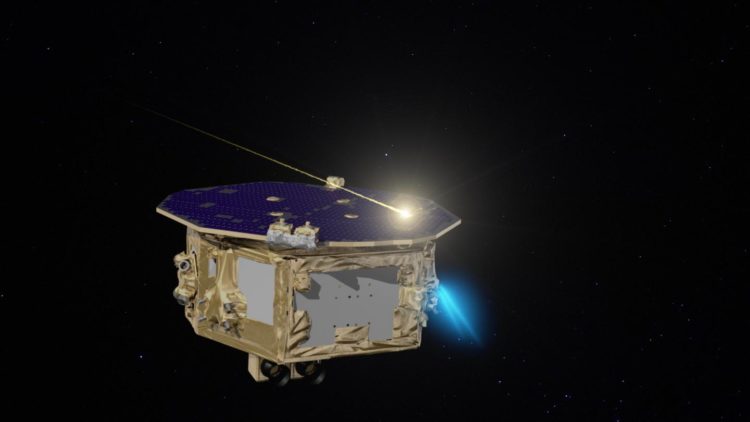
Credit: NASA’s Goddard Space Flight Center
LISA Pathfinder, a mission led by ESA (the European Space Agency) that included NASA contributions, successfully demonstrated technologies needed to build a future space-based gravitational wave observatory, a tool for detecting ripples in space-time produced by, among other things, merging black holes. A team of NASA scientists leveraged LISA Pathfinder’s record-setting sensitivity for a different purpose much closer to home — mapping microscopic dust shed by comets and asteroids.
Most of these particles, known as micrometeroids, have masses measured in micrograms, similar to a small grain of sand. But at speeds reaching 40,000 mph (64,000 kph), even micrometeoroids pack a punch.
The NASA team, led by Ira Thorpe at NASA’s Goddard Space Flight Center in Greenbelt, Maryland, detected 54 impacts during the mission, which lasted from 2015 to 2017. Modeling the strikes allowed the researchers to determine what kinds of objects shed the dust. The findings are broadly consistent with existing ideas of what generates micrometeroids found near Earth. The dusty culprits are mostly short-period comets whose orbits are determined by Jupiter. Comets with longer periods, like Halley’s comet, also contributed dust that LISA Pathfinder sensed.
The new measurements could help refine dust models used by researchers in a variety of studies, from understanding the physics of planet formation to estimating impact risks for current and future spacecraft.
###
Media Contact
Frank Reddy
[email protected]
Original Source
https:/
Related Journal Article
http://dx.





